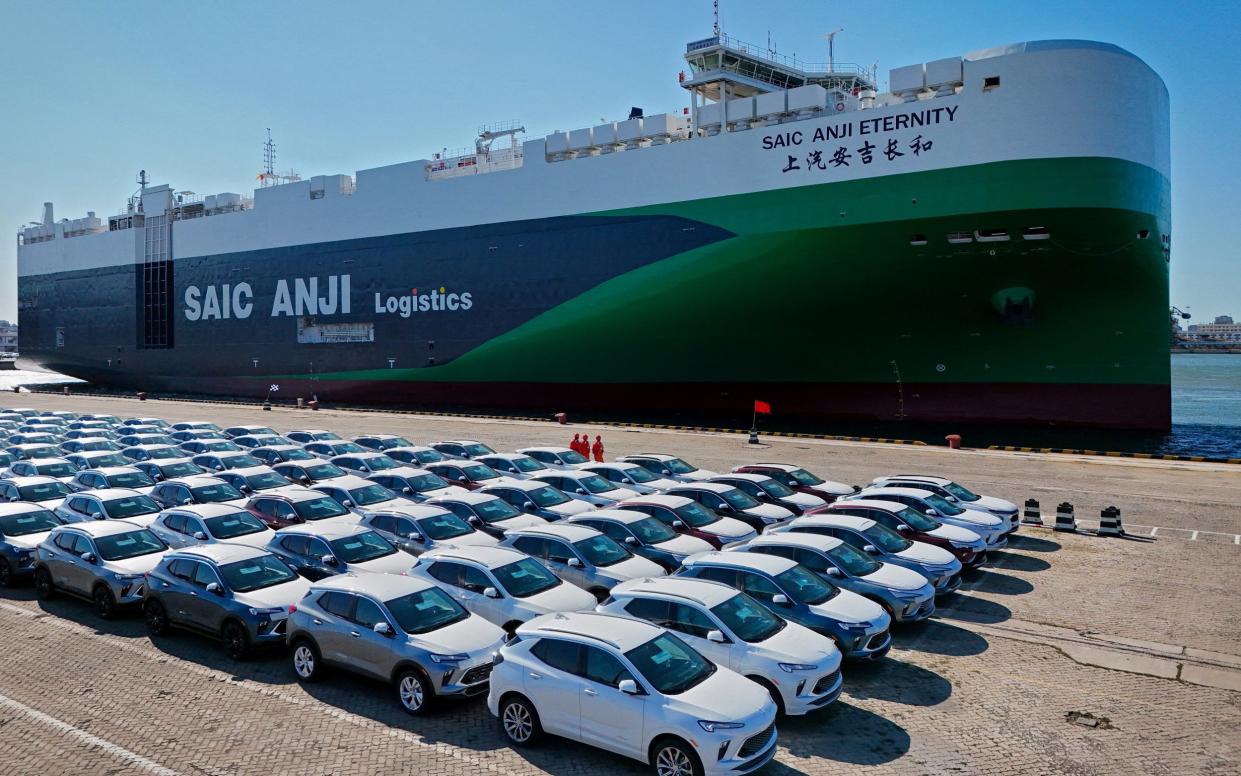China develops revolutionary electric car battery that can charge in 10 minutes

China has developed a revolutionary car battery that can charge in just 10 minutes and power a car for hundreds of miles before it needs to be plugged in.
A report from the International Energy Agency (IEA) has hailed “remarkable” developments in chemistry that have allowed China to develop new batteries that pack far more energy than existing technologies.
The IEA highlighted EV batteries capable of travelling 250 miles without a recharge. Newer versions announced since the report was written can manage 600 miles.
However, the agency raised the alarm about China’s increasing dominance of the supply of vital materials needed to build batteries. The country’s stranglehold on supply chains means net zero rollouts globally could be disrupted by “extreme weather, trade disputes or geopolitics”.
The IEA’s Global Critical Minerals Outlook highlighted that Chinese battery company CATL had developed a fast-charging “Shenxing” battery “capable of delivering 400km of range from a ten-minute charge”. The battery is to be rolled out in electric vehicles later this year, the IEA said.
The report was written before CATL’s latest announcement last month, that it has developed a new battery, the Shenxing Plus, capable of ranges of 600 miles between recharges.
This means cars propelled by the new Chinese batteries would need refuelling far less often than most current EVs and at a fraction of the cost.
The report said China has made a series of breakthroughs in battery chemistry that put it far ahead of rivals in the West.
“One of the most remarkable developments in the global battery sector in the last five years has been the resurgence of the lithium iron phosphate (LFP) cathode chemistry,” it said.
This is a reference to innovations that removed the dead space in batteries, roughly doubling the energy density and so massively extending the range.
The breakthrough is likely to be cheered by drivers, who have long complained about “range anxiety” with EVs.
However, the IEA report warned that China has cornered much of the global market for the minerals vital to making batteries, a fact that will alarm many Western governments who are concerned about Beijing’s grip on the green energy market.
The IEA report looked at worldwide supply, demand and uses for minerals like lithium, cobalt, nickel, graphite and copper – all of which are becoming increasingly vital for producing low carbon energy.
Supplies of most such metals are increasing but the IEA said markets are dominated by China.
EV batteries rely on several minerals. For example the cathodes generally include compounds of nickel, lithium, manganese, cobalt and iron, while the anodes typically contain compounds of graphite, and silicon.
The IEA said China now dominated global supplies of all such minerals. It said: “Over 90pc of battery-grade graphite and 77pc of refined rare earths in 2030 originate from China.”
It added: “Between now and 2030, some 70-75pc of projected supply growth for refined lithium, nickel, cobalt and rare earth elements comes from today’s top three producers. For battery grade spherical and synthetic graphite, almost 95pc of growth comes from China.
“These high levels of supply concentration represent a risk for the speed of energy transitions, as it makes supply chains and routes more vulnerable to disruption, whether from extreme weather, trade disputes or geopolitics.”
China’s global dominance in EVs is a product of its massive domestic market and the subsidies offered to consumers to buy them, said the report. It revealed that 60pc of all EVs sold globally went to Chinese buyers last year.
Much of China’s success was down to the deployment of new technologies that gave EVs far greater range and faster charging times without significantly increasing battery size. This has helped overcome the “range anxiety” that has long deterred European motorists from switching to electric vehicles.
The IEA study pointed to Chinese dominance across a range of other minerals and related technologies vital to the energy transition. For example, 90pc of the global supply in solar panels comes from China.
The country also dominates in electrolysers, which are used to make hydrogen from water. Wind turbines and associated infrastructure such as transformers and cabling – which all rely on the same set of minerals – showed the same trend.

